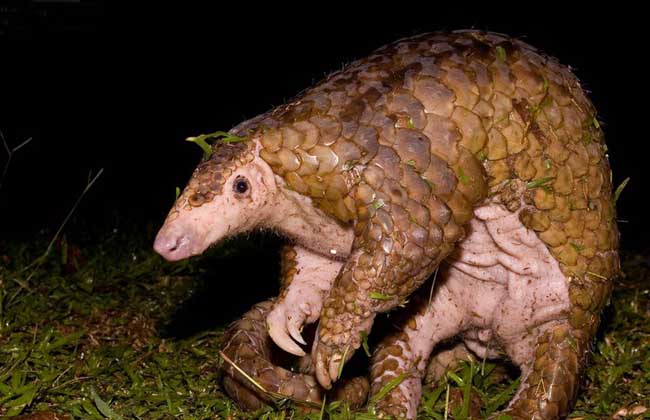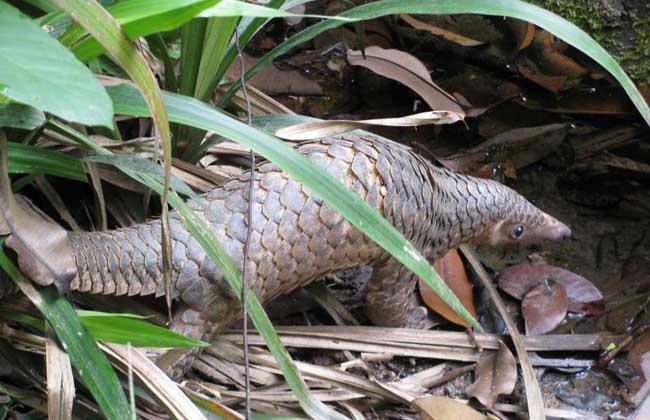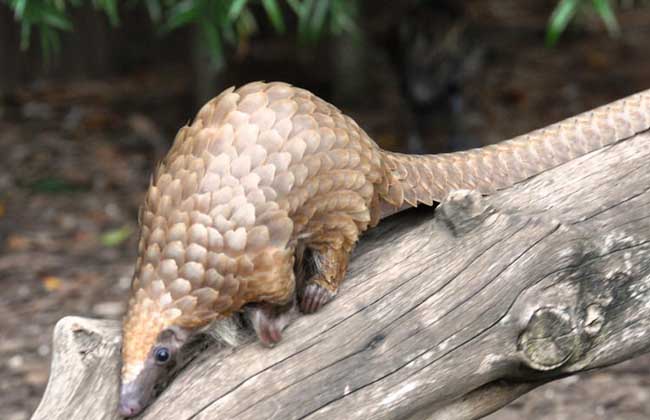The living habits of pangolin

Pangolins, also known as mud carp, mausoleum carp, dragon carp, stone mud carp, etc., often live in subtropical deciduous forests, often hide in caves during the day, go out for food at night, go out day and night, curl up into balls when they encounter enemies, and are rare in the wild. Private hunting and consumption are prohibited in China. Let's take a look at the living habits of pangolins.
Food habits of pangolin
Pangolins eat mainly termites, as well as ants and their larvae, bees, wasps and other insect larvae. The stomach of an adult pangolin can hold up to 500 grams of termites. According to the observation of scientists, in 250 mu of woodland, as long as there is an adult pangolin, termites will not cause harm to the forest, it can be seen that pangolin plays an important role in protecting forests, dams, maintaining ecological balance, human health and so on.
Breeding habits of pangolin
Pangolin is a viviparous animal, its oestrus mating time is mainly from April to May, male and female cohabitation in estrus, then separated after mating, delivery period is from December to January of the following year. The duration of estrus of male pangolin is about 5-6 months, and the estrus of male is long, and the estrus of male is non-cyclical. The female has 2-5 estrus cycles, the estrous cycle is 12-25 days, and the female is no longer in estrus after conception. Males look for females everywhere during estrus, cohabitation of male and female during estrus, separation after mating, one fetus a year, and three births in 2 years under artificial feeding conditions.
The burrowing habit of pangolin
1. Summer Cave: summer residence is called Xia Dong. It is built on a cool, ventilated hillside to avoid pouring into Rain Water. The tunnel in the hole is shorter, about 30 cm, and the structure is relatively simple.
2. Winter Cave: winter dwelling is called Dongdong Cave. It is built in a place with low terrain and leeward. The vertical height is more than 4 meters from the ground. The structure of the cave is more complex. The tunnel is curved and shaped like a gourd. Every other distance, there is an earth wall piled up with earth, which can reach more than 10 meters in length. It also passes through the nests of two or three termites, becoming its winter "granary". At the end of the cave, there is a more spacious concave hole. Covered with soft weeds to keep warm, it is its overwintering "bedroom" and is also used as a "nursery".
Related
- A course of planting techniques and methods on how to grow carrots
- How to plant the latest tulips?
- Is it better to pick tea in the morning or in the afternoon? When is the best time for tea to be picked? what is the third or fifth tea?
- Launch Yuanxiao Happy combination Haocha + Tea Yuan healthy Taste
- Penghu Tourism "Fireworks 20 Parade with You"
- 2022 West Lake Happiness holds "Digital Revitalization Voucher" and draws iphone13 and laptop.
- Banqiao Fuzhou social houses are designed to change start-up combined with police elimination to create a safe and livable environment
- The convenient measure of "mechanical weeding" in Xinbei has been abused and the Agriculture Bureau has imposed heavy penalties on the illegal land consolidation.
- Changgeng University Joins Hands with Four Memory Factories to Rescue Memory Talent Shortage
- The list of Taiwan's top 100 MVP managers is listed by the Director-General of the Farmers' Association of Sanxia District.



